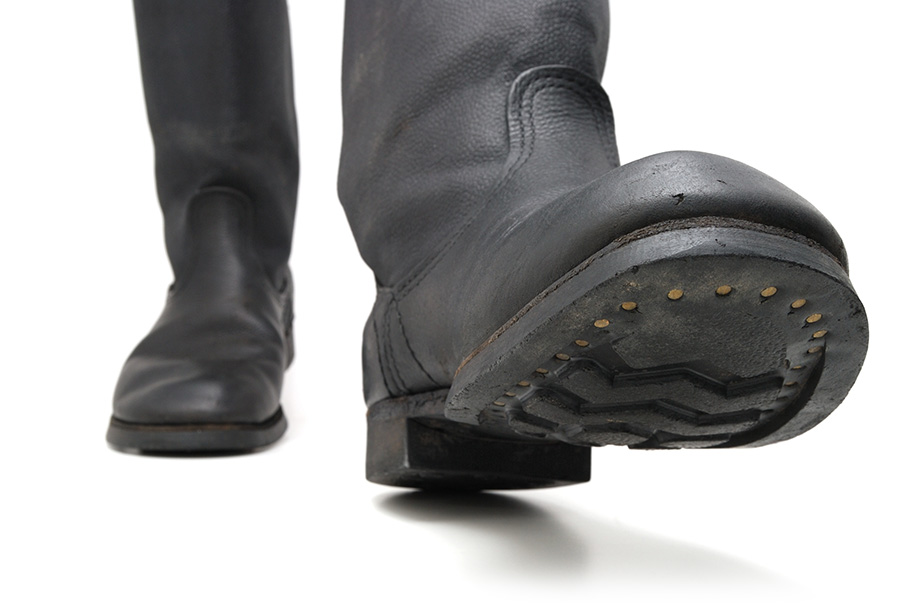Yuft - what is it? Many have heard this word, and many know that yuft is a type of skin. But what are her properties and what is she? What is it made of and for what things is applied?
History
The history of Russian yufti (this is the name of this skin grade) takes its beginnings in the time of Peter the Great. Peter I, among other government affairs, decided to conduct an audit in the leather industry and was very dissatisfied with the fact that, with a huge amount of leather material, it was not processed by domestic producers themselves, but sold to foreigners in raw form, then they were already bought at high prices products from Russian leather. A decree was issued banning the export of raw skin abroad, and Russian tanners learned how to craft yuft rather quickly. Soon they became the best in the world in its production.
The unique technology was:
- in many months of aging cow, less often reindeer skins in vessels with oat or rye flour and yeast;
- soaking them in tanning juice using a variety of tree species, often these were willows, larch, poplar and oak;
- in manual treatment with whale or seal oil and in greasing with birch tar.
Significant fatliquoring (when at least 25% of the weight of the yuft was the amount of fat) gave the Russian skin extraordinary elasticity and softness, as well as unsurpassed moisture resistance. Detailed instructions have not been preserved to this day, where all stages of yuft dressing would be described. But it is known that in total the whole process took from 18 months to 2 years.

Depending on the method of final processing and the quality of the starting material, three types of yufti were distinguished: red, white and black. The best skin was selected for white, and the fatliquoring process was very intensive. The white yuft was mainly used for the needs of the Russian army. Belts, cartridge bags, boots and other military ammunition were sewn from it. Red yuft was almost as made as white, but it was smeared when dried with an alum solution, and was stained with mahogany. After tanning, black yuft was painted with iron salts in black. It was used for domestic consumption - shoes were made from it and crews were made.
Present
What is yuft these days? It is a soft, flexible material. It is very popular in the shoe industry. The leather of the yuft is quite thick and dense, but not excessively, this allows it to remain soft.
This skin is shoe and sandalwood. They differ from each other in their qualities: if the first is worn only in dry conditions, since it is sufficiently permeable to moisture, then the second is worn both in dry and in wet conditions. The thing is that the shoe yuft contains less fat, therefore it repels moisture worse.
Sandalwood yuft is made of breathable material. It is also quite thin, has a glossy appearance, as it undergoes grinding.
Currently, black yuft is very popular. But as before, white is considered to be of the highest quality - the best raw materials are also selected for it. Strongly, of course, the technology has not changed - the skin is also abundantly fattened. Work with the material is completed by grinding and painting.
There is also a skin variety such as heat-resistant yuft. What it is? This is a skin treated with a fatliquoring substance and aqueous dispersions of polymers with low water permeability and increased heat resistance.
Yufti properties
The main properties of yufti include:
- softness;
- strength and durability;
- plastic;
- resistance to bending;
- water resistance.
Shoes from yuft and other shoes
Once yuft boots and boots were actively used in the army. All kinds of products are still being made, which are combined from tarpaulin and yuft. The bootleg is made of kersey, and the part in contact with the foot is made of natural yuft.
But berets - not the only thing that is made from it, you can find a lot of civilian shoes. Often these are working models: for builders, geologists, installers, for surveyors and so on. Heat-resistant yuft is used in the manufacture of safety shoes. Casual shoes are also common: ballet shoes, boots, leather sneakers and more.
In this article it was briefly told what it is - yuft, what properties it possesses, what kinds it happens.
It is also worth knowing that the quality of the yuft must comply with the standards of GOST 485-82.